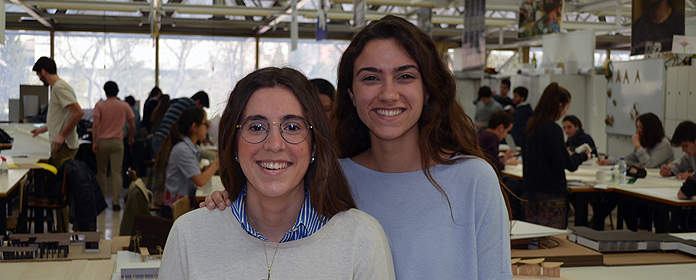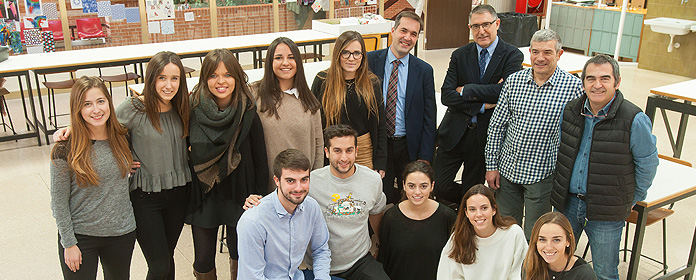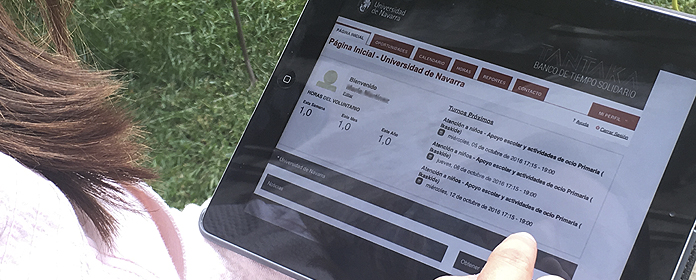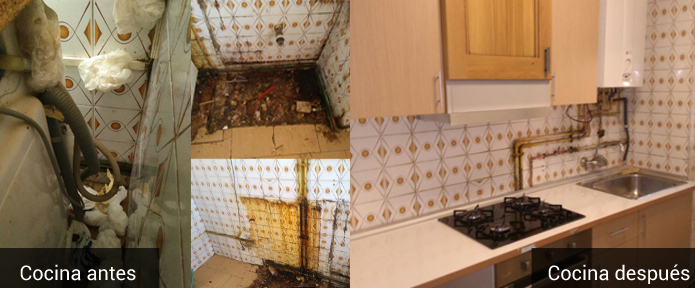Navarre projects without borders
Architect Sofía Arraiza designed a center for the disabled in India in her final year work degree program at the University.
Polgen and Rufina's house has no windows. The walls are made of bamboo, the roof of banana leaves. Raised one meter above the ground, to avoid the monsoon rains, it has only one room that, since they lost their sight, they recognize with their hands.
Polgen and Rufina will soon be moving into a new home that, until a year ago, only stood on Sofia Arraiza's travel notebook . It was her work at the end of degree program at the School of Architecture University of Navarra. Now it also stands on one of the villages of Meghalaya or "cloud top", the most mountainous of India's seven sister states.
Little by little, the plans of this Navarrese woman have taken shape and part of the thirty homes for blind adults planned in a project supported by the Missionaries of Christ Jesus have already been built.
At this tea plantation in the Tura region, they will be taught a official document that will allow them greater autonomy within the tribe. "And that is an achievement in a society that is still primitive, with little means," says Sofia.
On the other side of the Himalayan mountain range, the cultural distance in the North Indian States is even greater than the geographical one. "They are not governed by the caste system, nor is their religion Hindu, but animist. They are the most marginalized tribes within India. There are hardly any professionals from any subject; much less, doctors." Sofia has experienced the consequences of this isolation. On some of her jeep visits to remote tribes she found that all the members had fallen ill from epidemics. "Then there are the cases of blindness, widespread due to insufficient food and sometimes misguided application of traditional medicine." Although 'eye camps' have been set up to restore patients' sight, Sofia says that many have no cure, "so it is necessary to create homes where they learn to fend for themselves."
Aesthetics that can be feltThree months go by fast. And even more so in India, "where time is measured by stories lived," says Sofia. With the folder full of names and faces to 'inhabit' in her sketches, when she returned to Pamplona she decided, "for coherence and commitment", to change the topic of her project of the end of degree program at the University of Navarra.
So began the design of a center for training and residency program for the disabled in Tura. "I needed a dwelling internship, resistant to monsoons and earthquakes, which at the same time would take advantage of the materials in the area. I also wanted it to respect contact with nature and the tribe's community values."
He had to do a lot of research and talk a lot with them so as not to impose his style on them. In the end, the ideas began to emerge. First, a sloping roof that poured rainwater onto elevated tanks, under which to place the installations area. Then, solar panels capable of producing domestic hot water and generating electricity. The living areas were designed perpendicular to the wind, with bamboo partitions to promote air currents.
All the details were thought out: from corners for silence to spaces open to the outdoors. "It was clear to me that I had to create patios with different privacy Degrees . In the School of Architecture they insist a lot on aesthetics and I wanted it to be perceived through the texture of the pavements that lead from one room to another". The result, an ecological project , but above all, supportive.




